This post may contain affiliate links to things like tours, hotels, Amazon associates and products. These help me earn a small commission at no additional charge to you.
For those who don’t know, Lesotho is a country landlocked within South Africa. They have their own currency (though they do also accept the South African Rand), their own language, their own king and their own culture.
So while travelling in South Africa, I knew I wanted to visit. Whilst backpacking I met Bethany, a Canadian who also wanted to go. We tried to research HOW – and hit multiples dead ends.
The dilemma
I’ve since been told that the biggest problem regarding Lesotho and tourism is that most foreign visitors travel via South African tour companies which means their money stays within South Africa and nothing is received by Lesotho, the country they’re actually visiting.
I can certainly see how this happens. Simply because we couldn’t find any information about visiting independently, at one point we thought joining a tour in South Africa might be our only option.
Lesotho’s capital, Maseru, is in the north, not far below South Africa’s Johannesburg. However, we were coming from the Garden Route, below Lesotho, where the border is well and truly blocked by the Sani Pass: a series of mountains that you need a 4×4 car to get over.
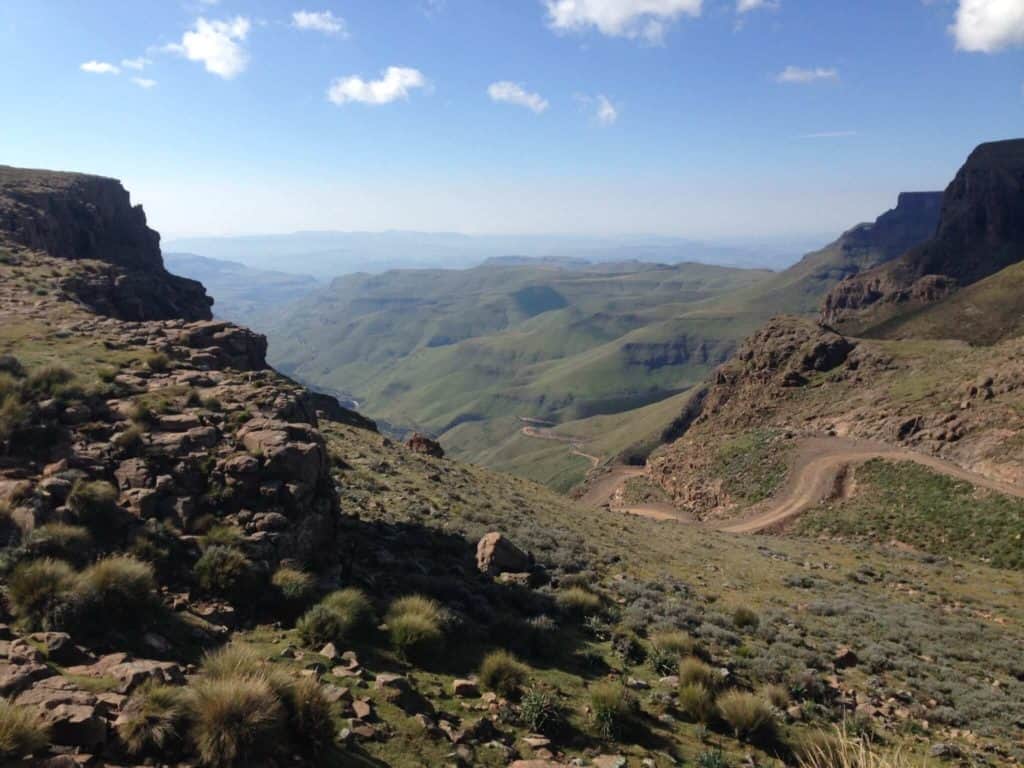
Getting to Lesotho
We considered our options:
- A) try to hire a beast of a car
- B) take a tour from the South African backpackers near the border
- C) attempt to find a local bus and do it ourselves (we didn’t actually know if this was even possible).
We were all about C! A car hire would be expensive, it would take time to find one, and it could be potentially treacherous driving. Neither of us wanted to take an expensive day tour from South Africa which would take us from highlight to highlight at someone else’s schedule and not let us meet the people and see what the country was all about.
With that in mind, we rocked up at Sani Lodge Backpackers on the border to work it out from there. The staff told us local minibuses DID travel over the mountain pass – exactly the news we wanted to hear!
Bethany and I decided an adventure was on the cards. We decided not to plan our trip, book any accommodation or organise anything.
I was really excited about this. I took an organised 40-day tour through seven countries from Kenya to Cape Town and since had been on the Baz Bus: South Africa’s door-to-door backpacker’s bus that doesn’t really allow you to get lost.
While I love travelling in Africa, so far I’ve found it hard to integrate with the locals. In Asia – you pull up a stool, tuck into a bowl of pho and immediately have a group of new friends, as I proved in the Philippines:
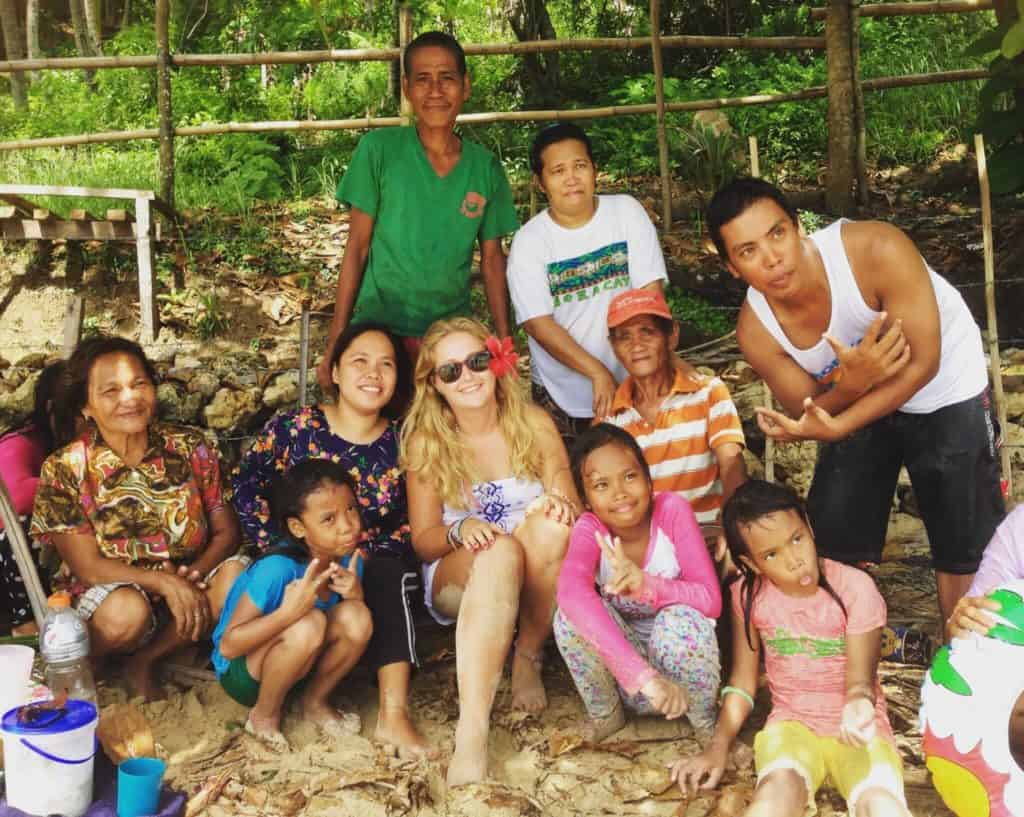
In contrast, Westerners pay thousands of dollars to go on safari in the Serengeti, climb Kilimanjaro and tour the pristine beaches of Zanzibar. Most of the locals live out in the arid countryside and while I’d have liked to meet them, it wasn’t a stop on the tour.
So, I digress but my point is – around Africa, I’ve sometimes felt sheltered from reality: a tourist seeing the attractions and never really breaking out of my bubble.
We left our big rucksacks at our hostel in South Africa and headed off on foot to find a local minibus. They were apparently a 3k walk away but after about 10 minutes, we were picked up by one of the hostel’s 4x4s, heading towards the pass for a day tour.
We were dropped off at the local bus stand and instructed to visit this ticket office. We immediately knew we were off the tourist track!
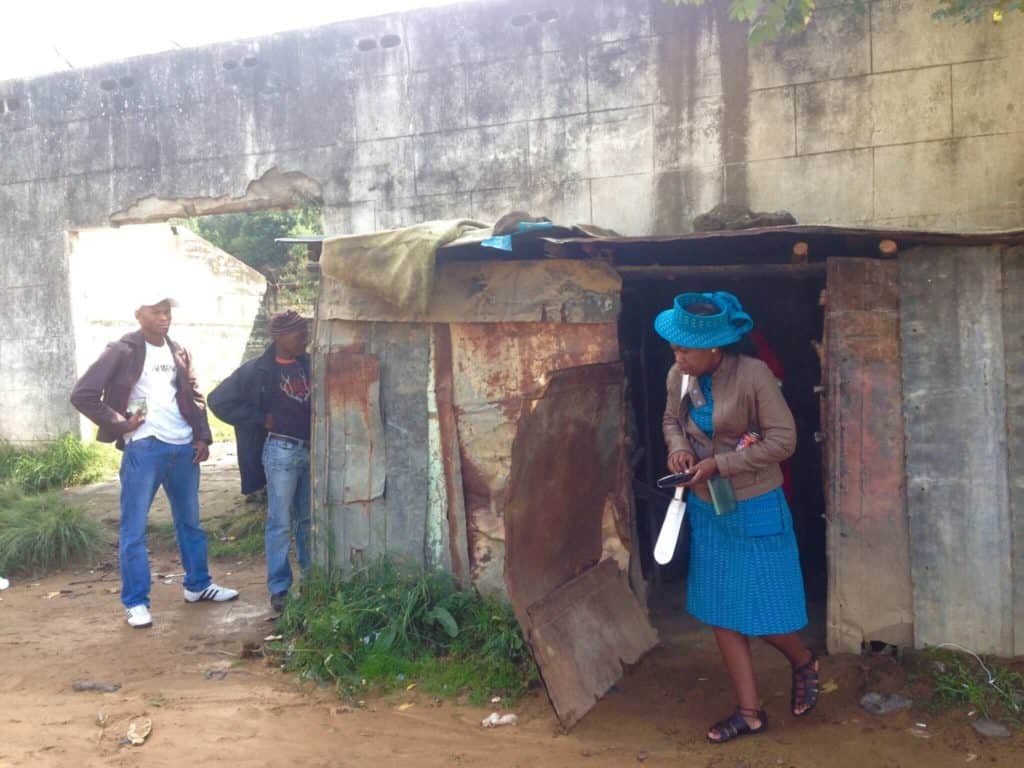
We paid the equivalent of £6 for a bus that would take us over the mountain pass, across the border and to a town in Lesotho called Mokhotlong.
The treacherous Sani Pass
Getting over the Sani Pass was certainly an experience. It was definitely a 4×4 job but unfortunately, we were not in one. Our bus left only when it was full, and when I say full, I mean full! There were four people on each three-person bench plus lots of luggage… every time we went up a hill (which was basically the entire time on the pass), the bus was straining against our weight and threatening to slide back down.
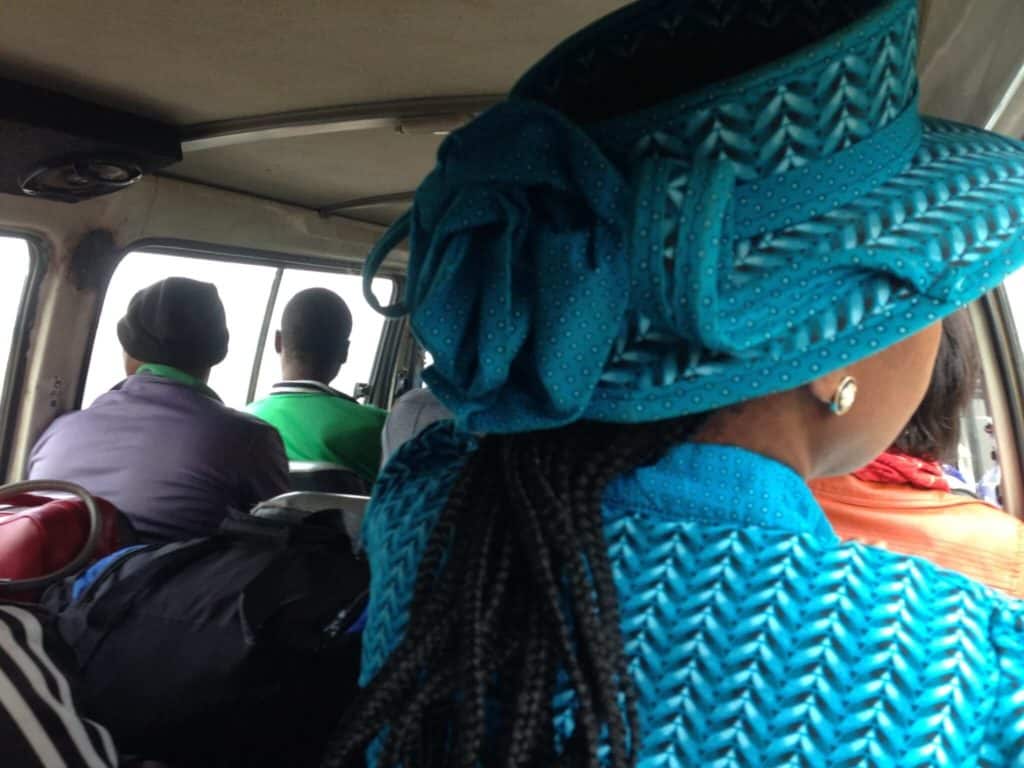
Because it was raining the pass was really slippy. Bethany and I took one look at the pile of mud we were about to drive through and were like ‘no way’ – but it was yes way! We stormed through it and the next one and the next.
The pass was a windy track through the mountains that went back and forth on itself so we were usually being thrown one way or another, and my head was constantly smacking the ceiling. Headgear should have been mandatory.
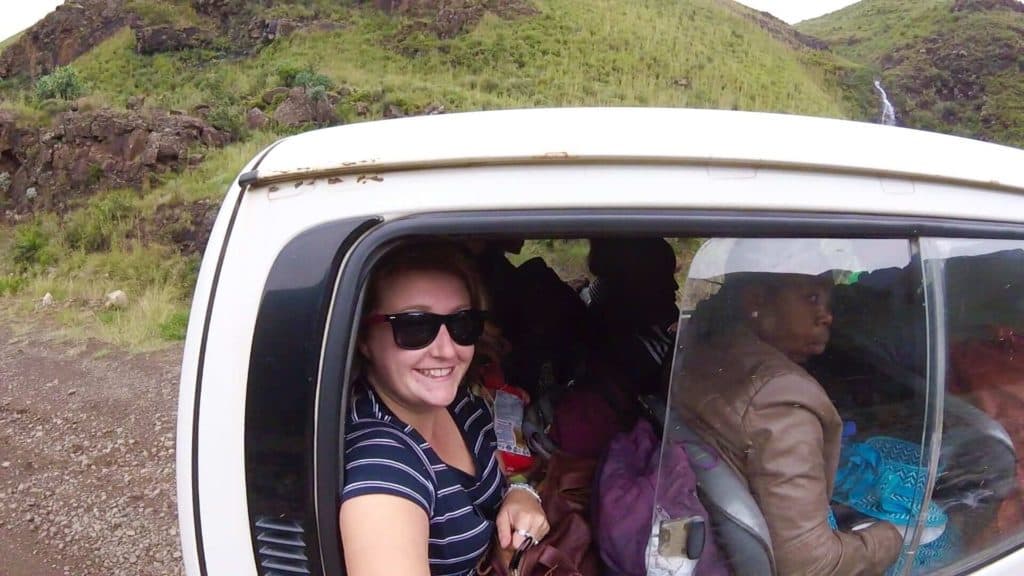
Still, the views were absolutely incredible. The hills were so lush and green and were rolling like grassy waves against the horizon. I spent a lot of time with my GoPro pointed out of the window like an ultra-keen tourist – but actually, it was so stunning even the locals were taking photos.
Checking out of South Africa
We checked out and after a section of mountainous no man’s land, we arrived at the highest border crossing in the world and the entrance to the Kingdom of Lesotho. While Lesotho as a whole was definitely not touristy, the area at the border was home to a few colourful craft shops and a campsite boasting the highest pub in Africa.
Because we were on the local bus which wasn’t about to wait for us, checking this out had to wait for our return journey.
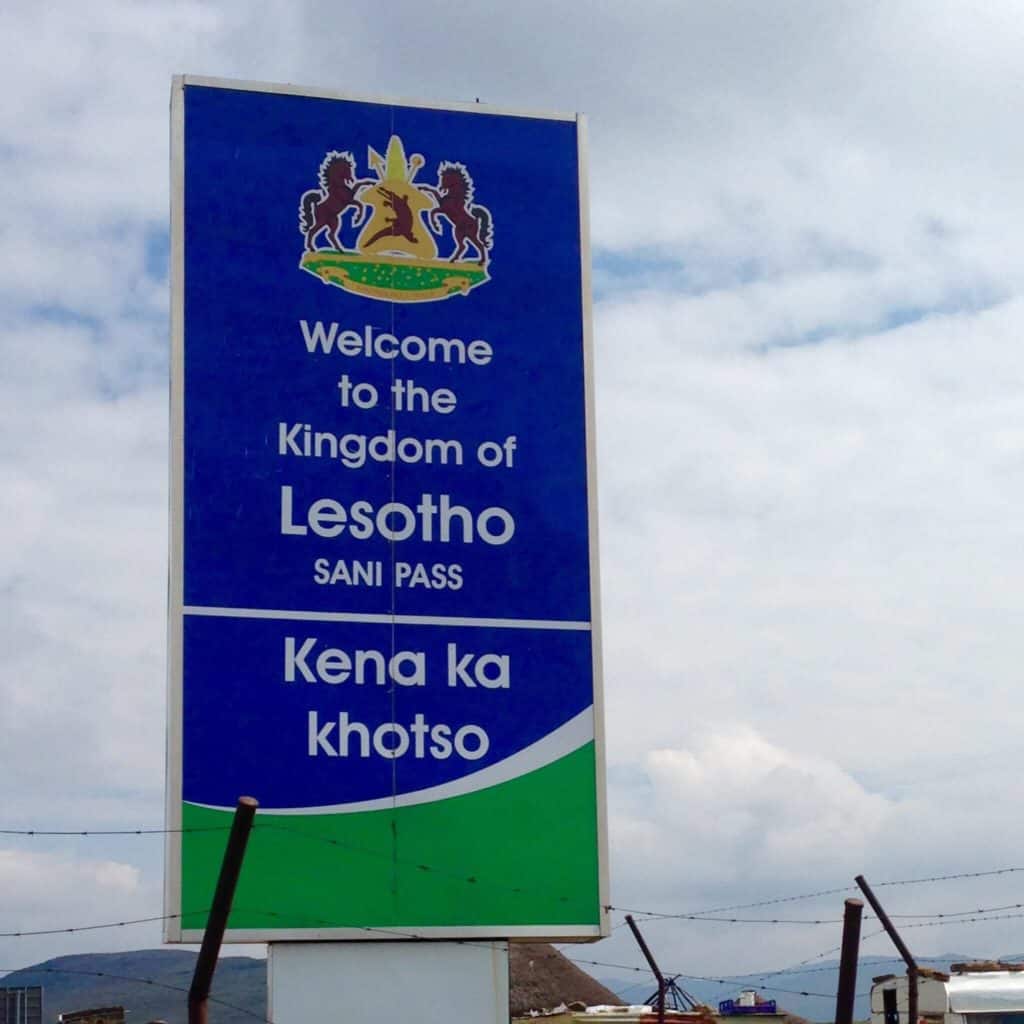
We got back on our bus which was pounding insanely loud African music, and marvelled as we began to get used to the countryside. It was so different to South Africa, and also anywhere I’ve been. The people and the countryside worked together in a way that only a rural destination can – everyone we passed was either on horseback or herding sheep.
It was the clothing that I noticed the most: despite the fact that it was boiling hot (to me anyway), people were clad in thick, patterned blankets. Some even had them pulled over their heads and faces – I think to shade them from the sun. I’d have probably passed out after five minutes in one.
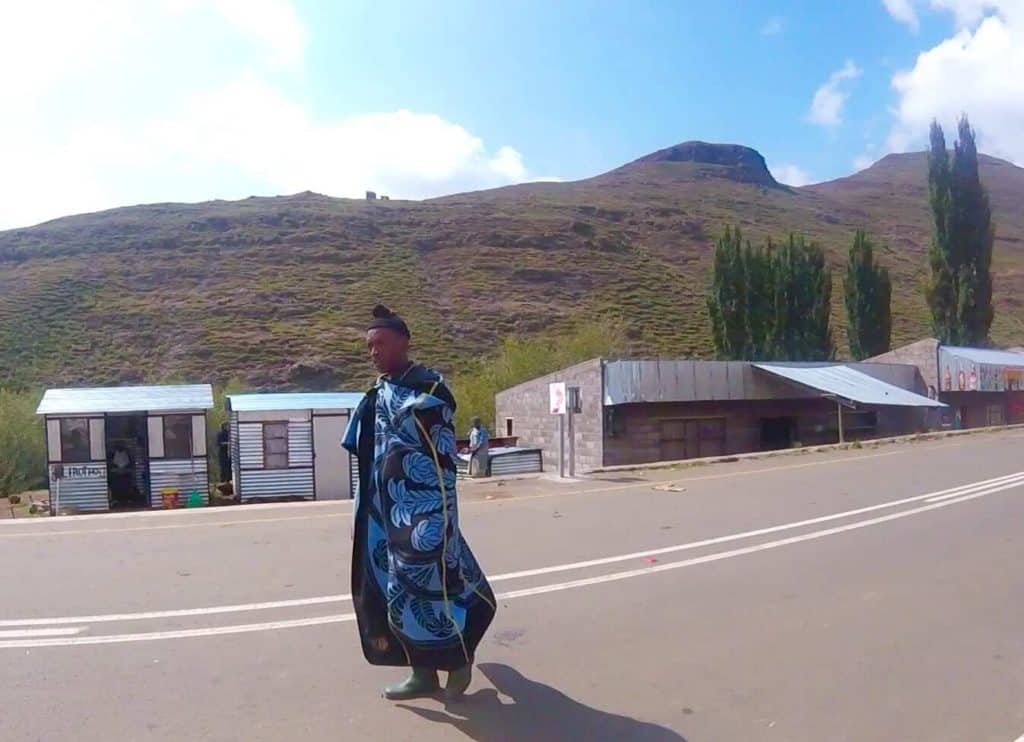
Mokhotlong
Eventually, we reached our end destination of Mokhotlong – and realised we had no idea what we were actually doing there.
It was a small, friendly town and plenty of the residents stopped us in the street to chat – as white, blonde girls we stood out just a TAD – and asked us where we were going, and if there was somewhere we were looking for. Unsure what to do, we decided food was a good plan.
Mokhotlong didn’t have any restaurants that we could see but there was a barbecue on the main street where chicken breasts and legs were being cooked and served with pap (a doughy maize meal).
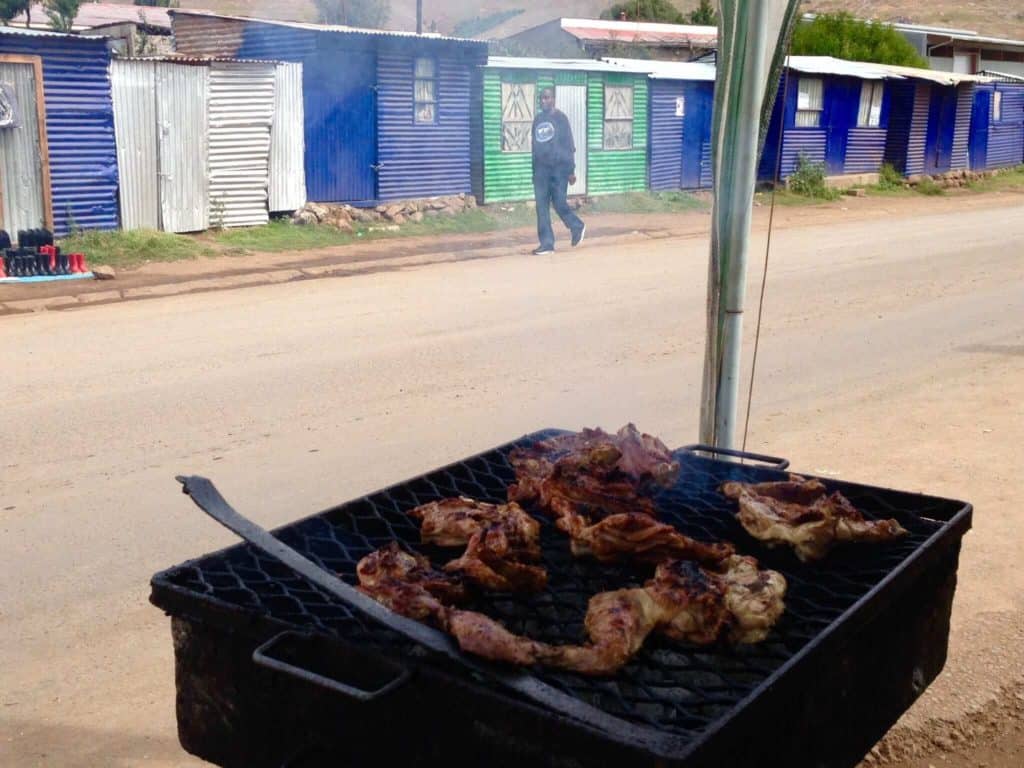
We paid 50 Rand (£3) for two pieces of chicken and pap each – that’s less than a pound per giant chicken breast smothered in peri peri sauce (cheapest Nando’s ever!). When I finished eating, our new friends on the stall insisted I must eat more chicken for free… No resistance from me!
Our chicken was packaged up in takeaway boxes but, as we had nowhere to go, we went to sit on the curb – and were instead ushered into a little tin room behind the barbecue. Bethany and I both agreed we’d have rather been sat on the curb because the room was almost entirely taken up with a vat of raw chicken which one of the guys started chopping up as we ate. However, they’d definitely invited us in to be hospitable so we weren’t about to complain.
Our new friends chatted to us, teaching us a few local words and phrases. We were told that while the country is called Lesotho, the language is Sesotho and the people are called Basotho. We even got onto the subject of local healers who the people strongly believe can cure all kinds of ailments including HIV. It was harrowing to hear that people think this can be easily cured without medicine.
After eating we went for a wander towards the outskirts of town. Like anywhere, one of the best things to do in Lesotho for me was see how the locals life. I loved the style of the houses in Lesotho – round buildings made from stone and sporting thatched roofs.
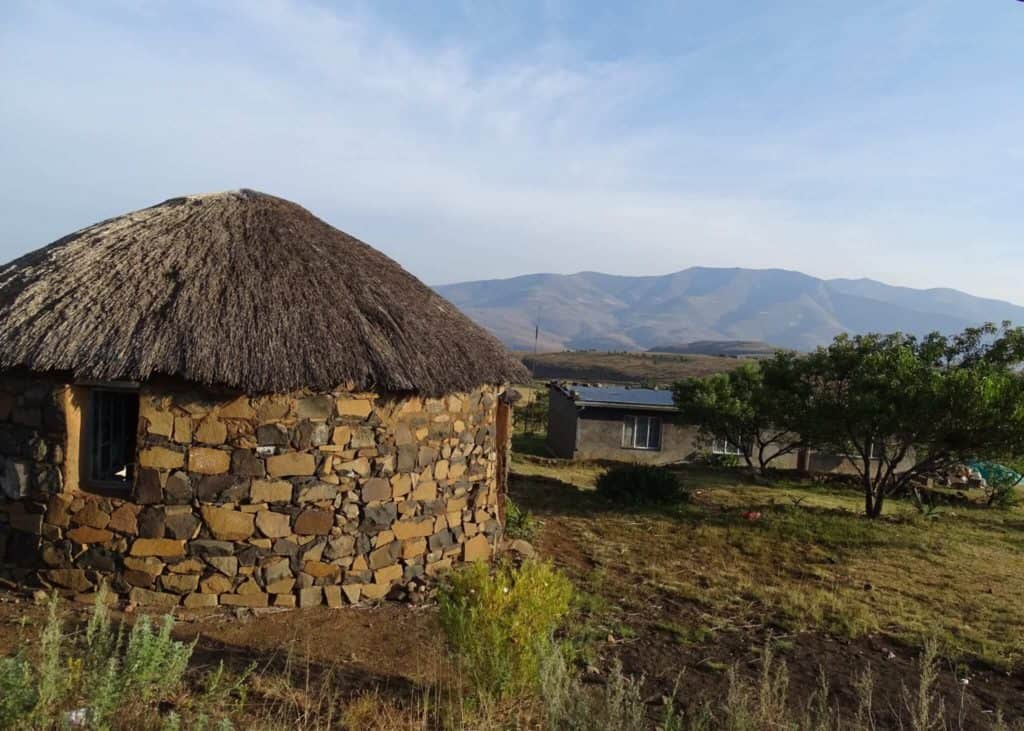
We were quite possibly the only tourists to have ever wandered around that area and while the local people were friendly, they were also a bit confused and the most common question asked was ‘why are you here?’ – as if we’d been on the hunt for Cape Town and taken a VERY wrong turn.
Standing at a viewpoint over the valley below the village, we were approached by a couple of kids – one of whom was Zannalee, a teenage girl wearing bright yellow trousers who was keen to chat to us.
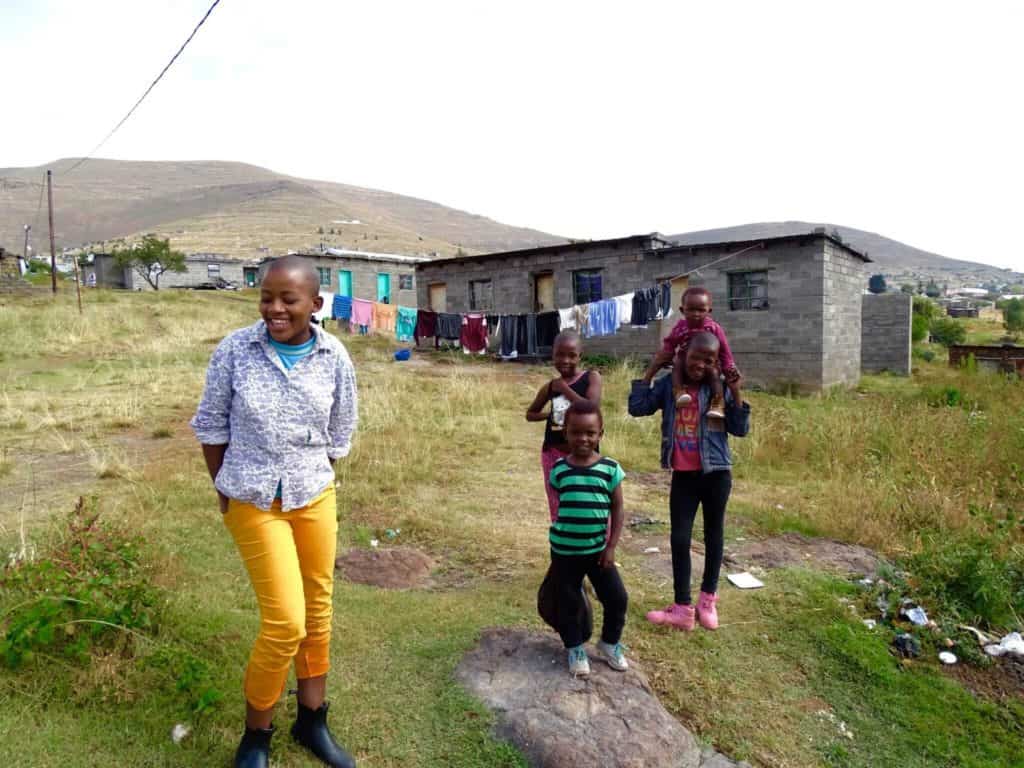
Zannalee told us she wanted to become an actress. She spoke incredible English and explained to us that the beautiful valley we were looking down on was soon to be flooded and made into a reservoir. From what I understand, South Africa’s water supply predominately comes from Lesotho and the situation is heavily controlled by SA.
Despite the fact that Zannalee’s mother grows crops in the valley and their livelihood depend on it, I wouldn’t imagine they have much choice about its future. We asked Zannalee what she thought about it but she just smiled and shrugged and said they would find another plot elsewhere.
We decided to travel on to the next town we’d been told about, as we felt we’d seen most of Mokhotlong in our quick visit. We boarded another local bus which yet again was packed.
On the road again
Bethany was put in the back, sandwiched between three other women, and I was put in the front, beside the driver and a guy lying down in the passenger seat. When I asked why he was lying down, he told me he’d fallen off his horse and was on the way back from the hospital. He was clearly in agony and couldn’t move his shoulder, and his face was covered in scratches.
He seemed to be using the last of his energy as he told me ‘I need to sleep’. Poor guy – the last place he should have been was sharing a seat in a packed minibus, lurching around corners at a million miles an hour!
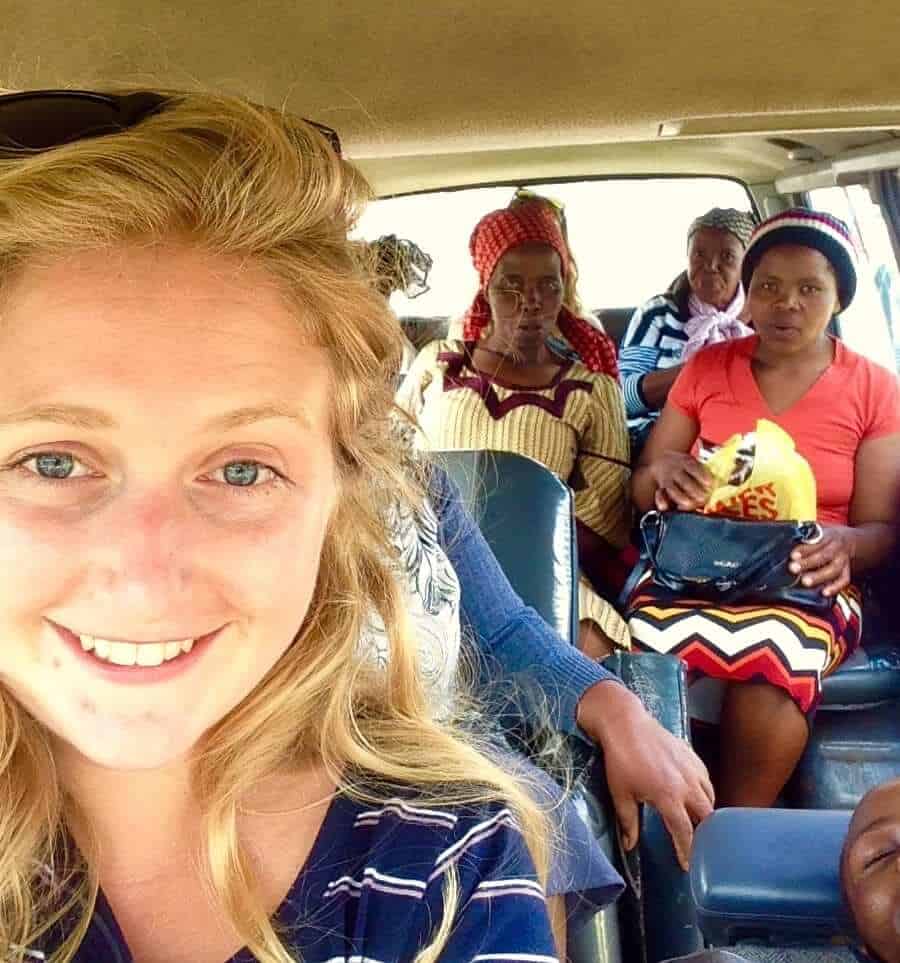
The other passengers found mine and Bethany’s presence a huge novelty and were hysterical at everything I did. Before we set off, a young boy of about five came and climbed into the driver’s seat and when the driver arrived I told him, no need, the little boy was going to drive.
The locals in the back were roaring (at me or with me, who knows) which they continued to do throughout the journey. The guy with the bad shoulder kept asking me to open the window when we stopped and I kept misunderstanding and thinking he meant the door. The driver shouted at me every time I threw it open and the locals couldn’t contain how funny they found this.
Bethany also told me after that at one point, someone farted in the back and everyone else rolled down the windows and were giggling A LOT. As usual, the bus was pumping the loudest African music you could imagine and the bass was shaking the whole bus. Poor, poor shoulder guy.
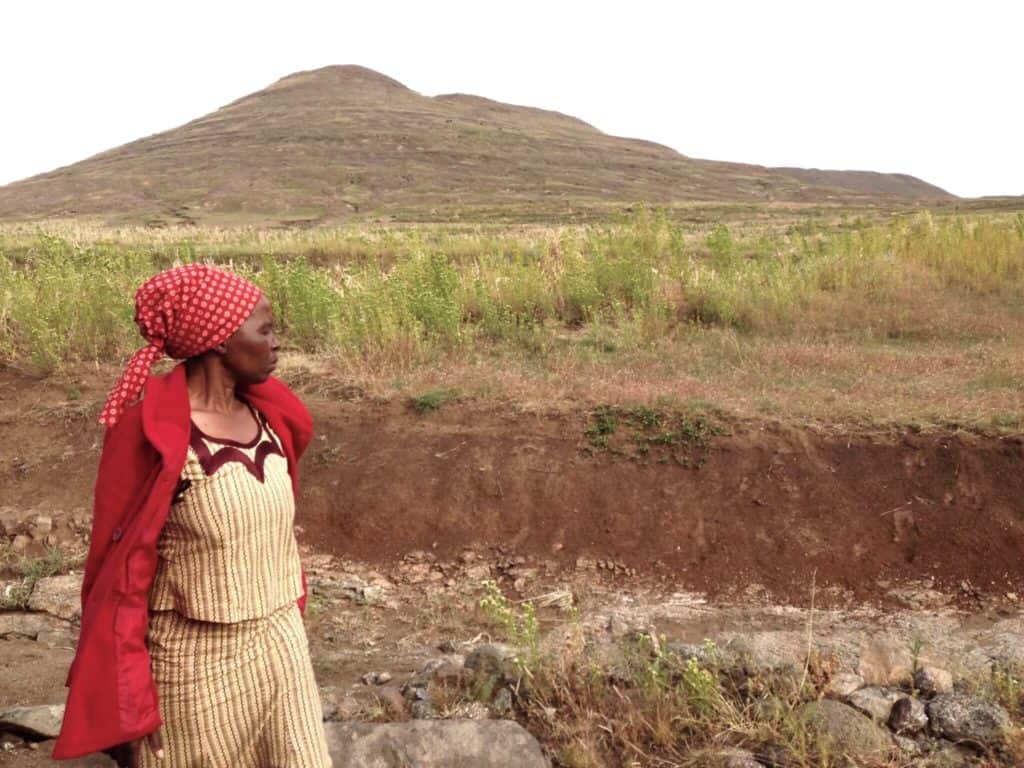
Molumong
Luckily the locals knew the guest house that had been recommended to Bethany as we’d never have found it alone – there was no sign or indication that it was a hostel and it looked just like any other concrete building. However it turned out to be a good base for the next two nights – even though the water wasn’t working for much of our stay, meaning washing, cooking and drinking was a challenge.
On our second day, the manager arranged for some local women to fill up the property’s water tank and they walked back and forth from the house to the village’s tap all day, with plastic buckets balanced on their heads. Then, we waited for him to connect it to the taps and make it run – by which time I was SO thirsty!!
I don’t think I’ve ever appreciated how lucky we are to always have water at our disposal, and also how much water I waste in ordinary life.
Molumong was a tiny village even smaller than Mokhotlong. There wasn’t a load to do apart from hang out with the locals – which luckily was exactly what Bethany and I wanted to do. We went for a walk on our first afternoon and inadvertently turned into the Pied Piper as the local kids joined ranks with us and went wherever we did.
Horse riding in the wilderness
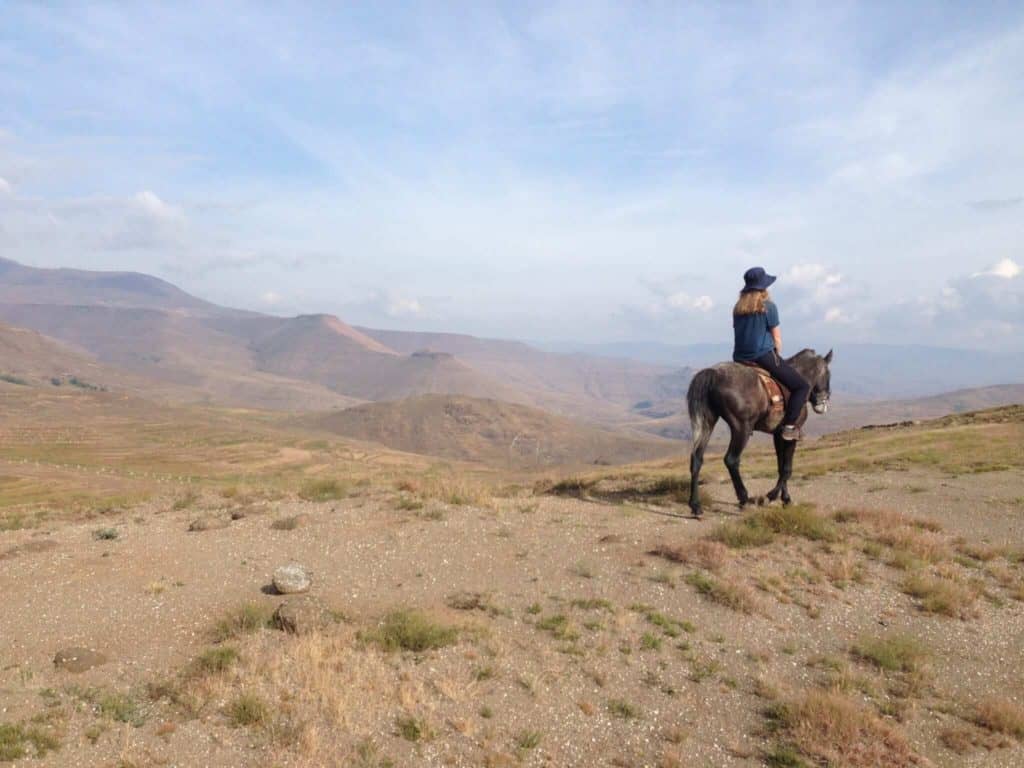
A couple of travel guides had informed me one of the best things to do in Lesotho was go horse riding – they weren’t wrong! We did this the morning after we arrived. There was definitely no tourist office in town but the man who owned the property took guests out riding for a very small fee.
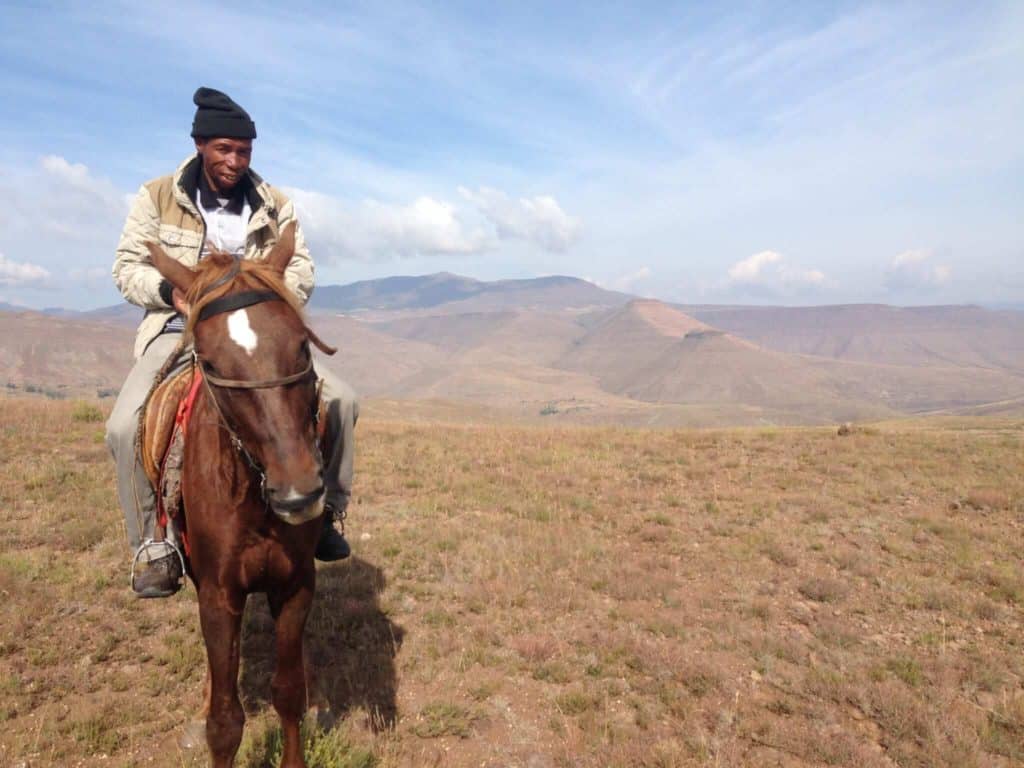
The horses were kept in the field surrounding our house so we basically rolled out of bed and onto a noble steed. There were no helmets or briefings – I’m no pro but had ridden a couple of months before in Malawi so instructed Bethany (who was slightly freaking out) on the basics. We rode out of the village and into the countryside where we were surrounded by mountains.
I felt so calm and peaceful breathing the fresh air and hearing nothing but the sound of our horse’s hooves…
…Until my horse decided to canter into a spiky bush and no amount of rein-tugging could persuade him out. They do say not to work with children or animals so maybe I had that coming.
Amazing as it was, I wouldn’t have wanted to spend loads longer out on the horse as it was getting HOT. That afternoon I had a small meltdown because of the temperature and lack of drinking water – and also probably because of the altitude (we were in the highest country in the world after all). As a white English girl I’m definitely not cut out for the African weather.
New friends
Once it had cooled down, a girl we’d met the previous day, Patience, and her friend, Florence, came to visit us at the house.
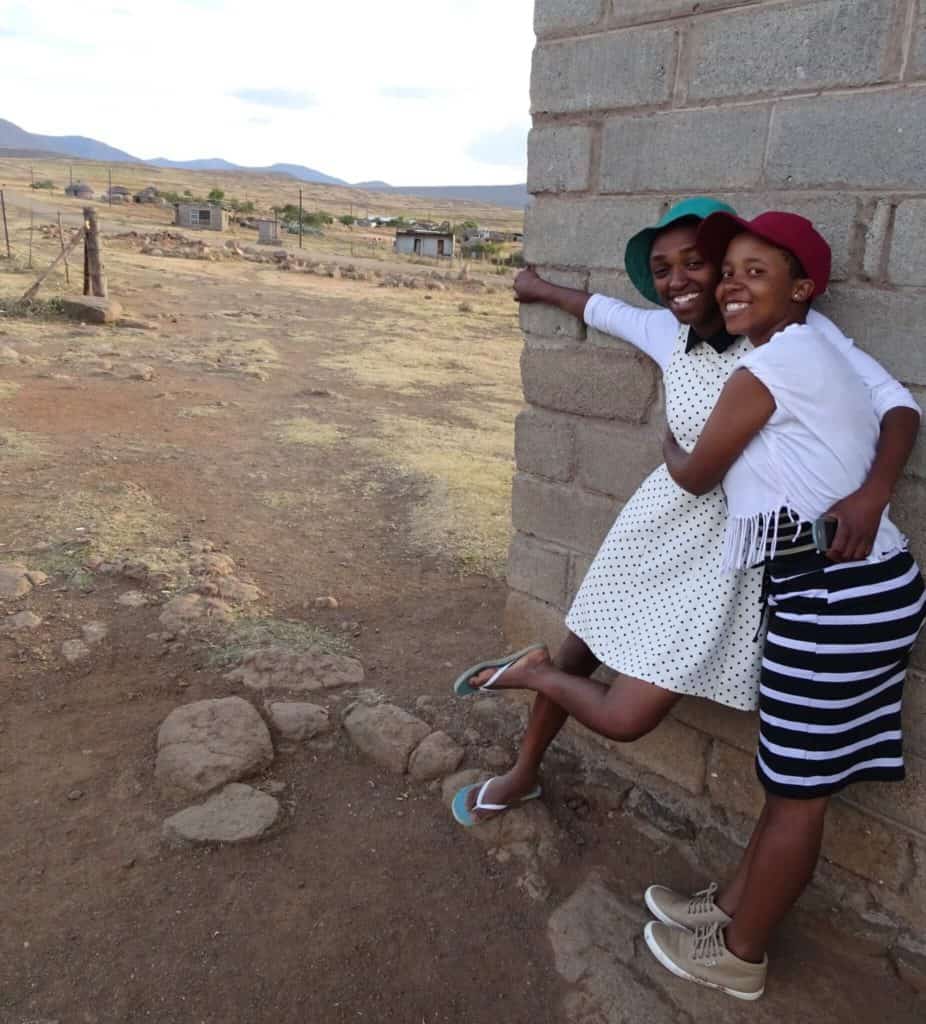
Bethany said she’d heard about some ancient rock paintings in a cave nearby, and did they want to come and see them with us?
Patience looked at us like we were mad and said that we shouldn’t go to the caves as bad people did bad things there. I assumed she was referring to crime but apparently she was actually talking about witches who practise bad magic.
She also mentioned that the caves were an hour’s walk away uphill. I immediately agreed with her: the witchcraft sounded like a bad idea and definitely not something we wanted to take any chances with! 😉
Instead, we went on a leisurely walk to a viewpoint overlooking a river. It was great chatting to Patience and Florence – my favourite people to learn from while travelling are usually girls my own age. It’s often the most fascinating comparison: an insight into how my life would be had I been born into the culture I’m visiting.
That morning an impressive church ceremony had taken place in town. We’d heard singing coming from a local building and when the doors had burst open, colour had flowed into the streets. Everyone was dressed in their Sunday best: bright blazers, decorated hats and patent heels which crunched into the dry earth.
Patience asked us if we go to church at home and we told her we didn’t. She looked confused and asked us how we talk to God; how we ask for things. When we told her we didn’t do that either, she found the whole thing hilarious.
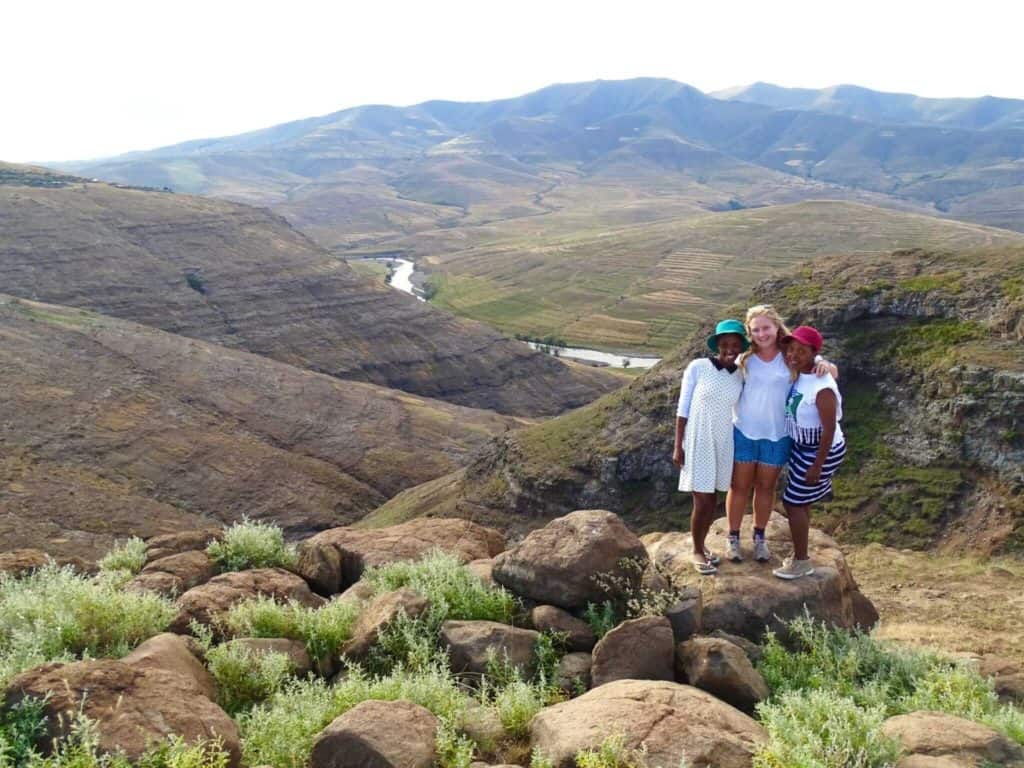
As the sun was setting, she turned to me, squinting against the sun, and asked ‘but what is your life without religion?’
Bethany explained that we exercise personal morals and goals, rather than following a divine code. They still clearly found the whole thing mind-boggling but thankfully decided not to further question our bizarre life choices.
Patience and Florence told us that even though they’re 21, they attend a vocational school where they learn useful industry skills such as knitting. It takes them two hours a day to walk there (as it does all the kids) because it’s in the next town. I can’t imagine spending four hours a day walking anywhere, let alone to and from school. Their dedication was so admirable and it wasn’t something they spent a second complaining about.
I do hope I return to this little country one day! We didn’t have time for many of the popular things to do in Lesotho, like make it to the capital, Maseru, or Africa’s tallest waterfall which sits in the middle of the country. I’ll have to see them another time.
Heading home
The next morning we journeyed back to South Africa via Mokhotlong and the Sani Pass. One thing I’ll definitely miss is the friendliness of the people in Lesotho. Waiting for the bus, my shoelace was undone and everyone was extremely concerned. When I asked the driver what time the bus would leave he said ‘tie your shoe; then I tell you’.
We had time for a quick stop at Africa’s highest pub, one of the most popular things to do in Lesotho, before we rattled back down the bumpy pass. Despite the fact it was 9am, we fitted in an Amarula shot (the African version of a Baileys). When in Lesotho, hey?
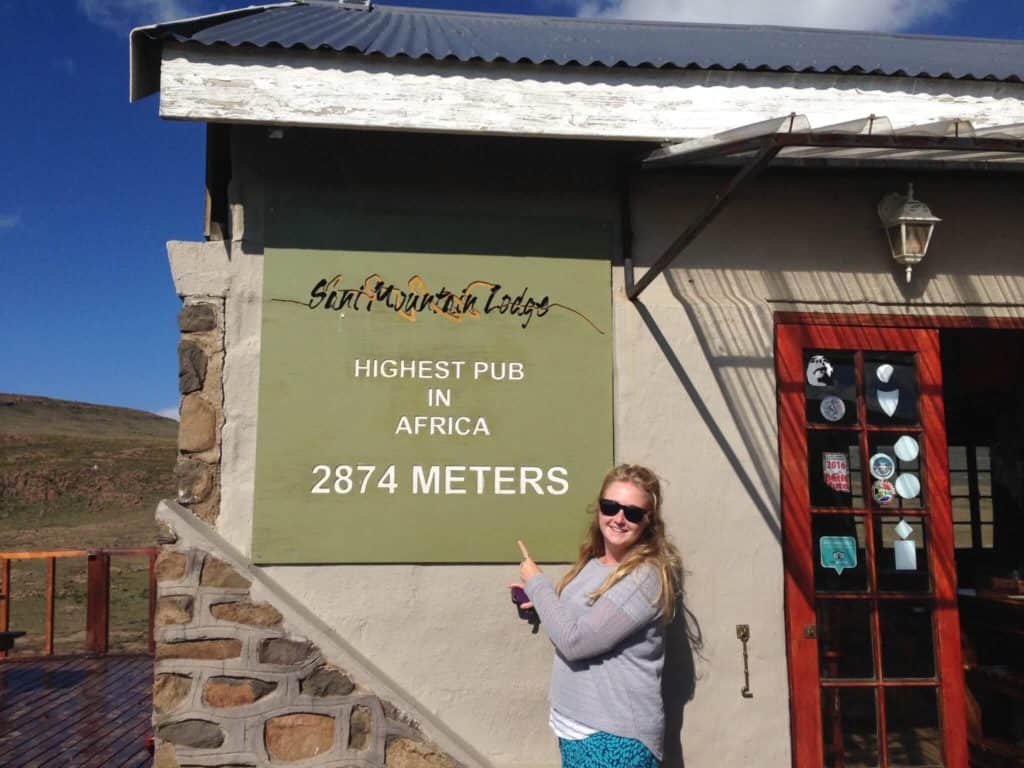
Thanks for reading!
If you liked it, please share it 🙂
See you next time for more adventures,

At your next visit, stay a little longer and visit all the districts. The mountain kingdom has attractions spaced out in the mountains and valkeys
Thanks David, I’ll be sure to!
I’m from Lesotho but live in the US now, I’ve never even been to those beautiful places myself 😅
You’re lucky! Anyway, I’m going to visit this July and I’m planning on going to the rural areas 😊
Hey Alina! That’s great to hear you’re visiting in July. I hope you have a blast. Beautiful country!
Thanks for visiting my country, Lesotho, I am a mosotho woman and I currently live and work in Saudi Arabia, I grew up in Lesotho but ultimately worked most of my youth years in South Africa, I like Lesotho and I own some properties in the capital Maseru , I read your story about touring Lesotho, sorry that you did not have tourist guidance, otherwise there are some nice fascinating places to go to whilst in Lesotho,next time if ever there’ll be a next time , you can contact me
Hi Linkeng, thanks for your comment! That’s so kind, I will certainly be in contact if I visit again!
I love reading this, please visit Lesotho again. There is a lot to see.I am from Lesotho living in the UK. Next time you will have a place to sleep in my district.